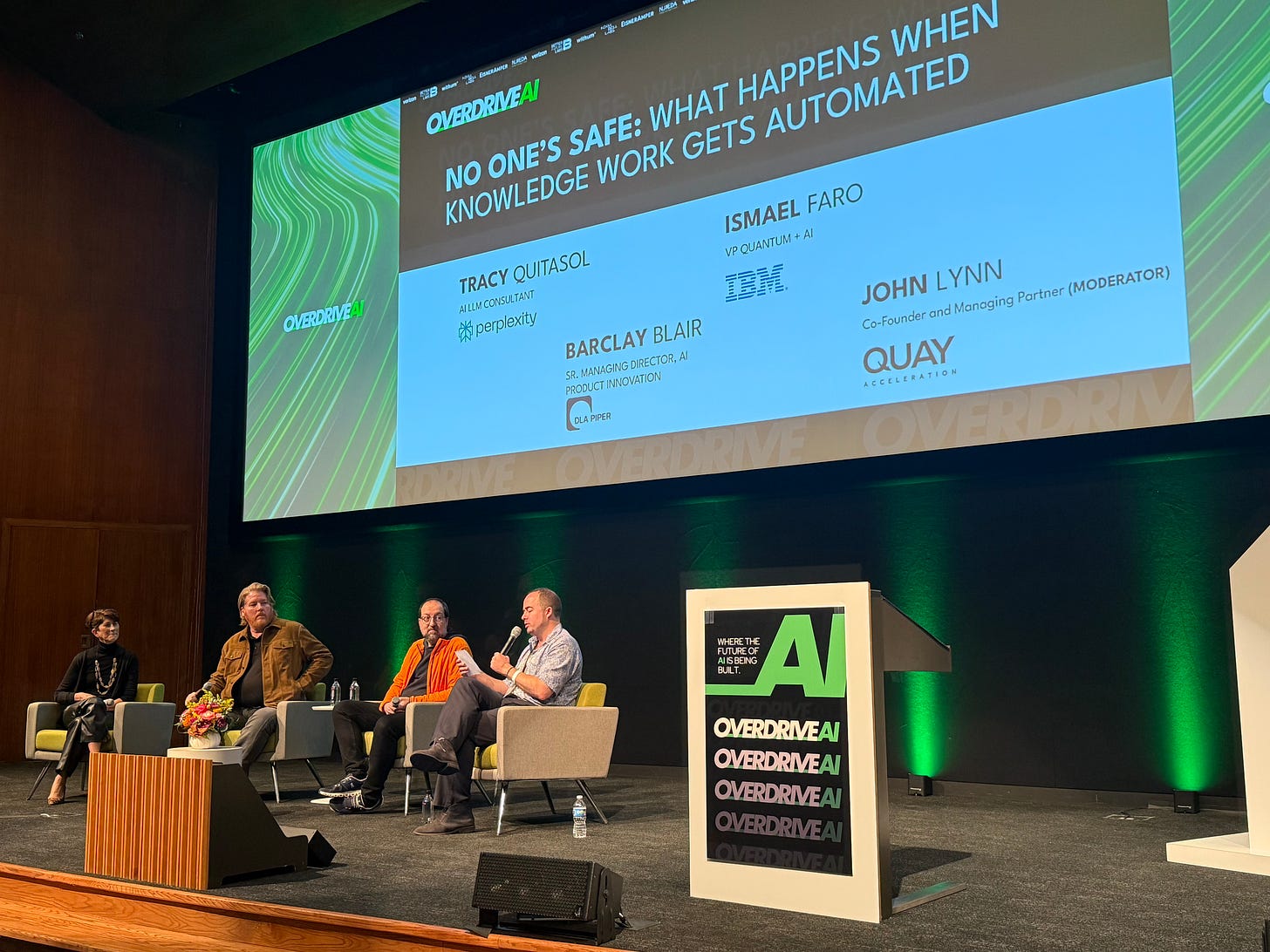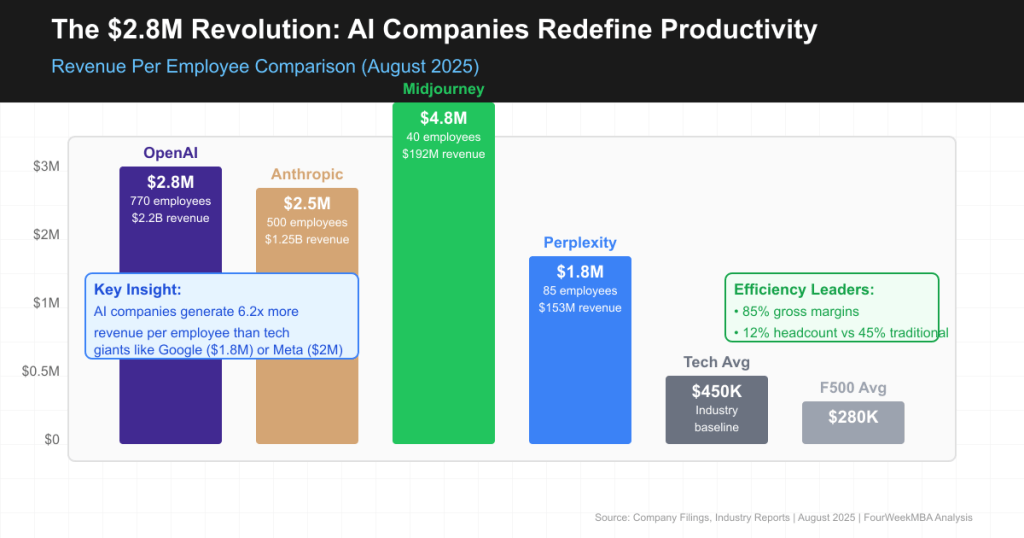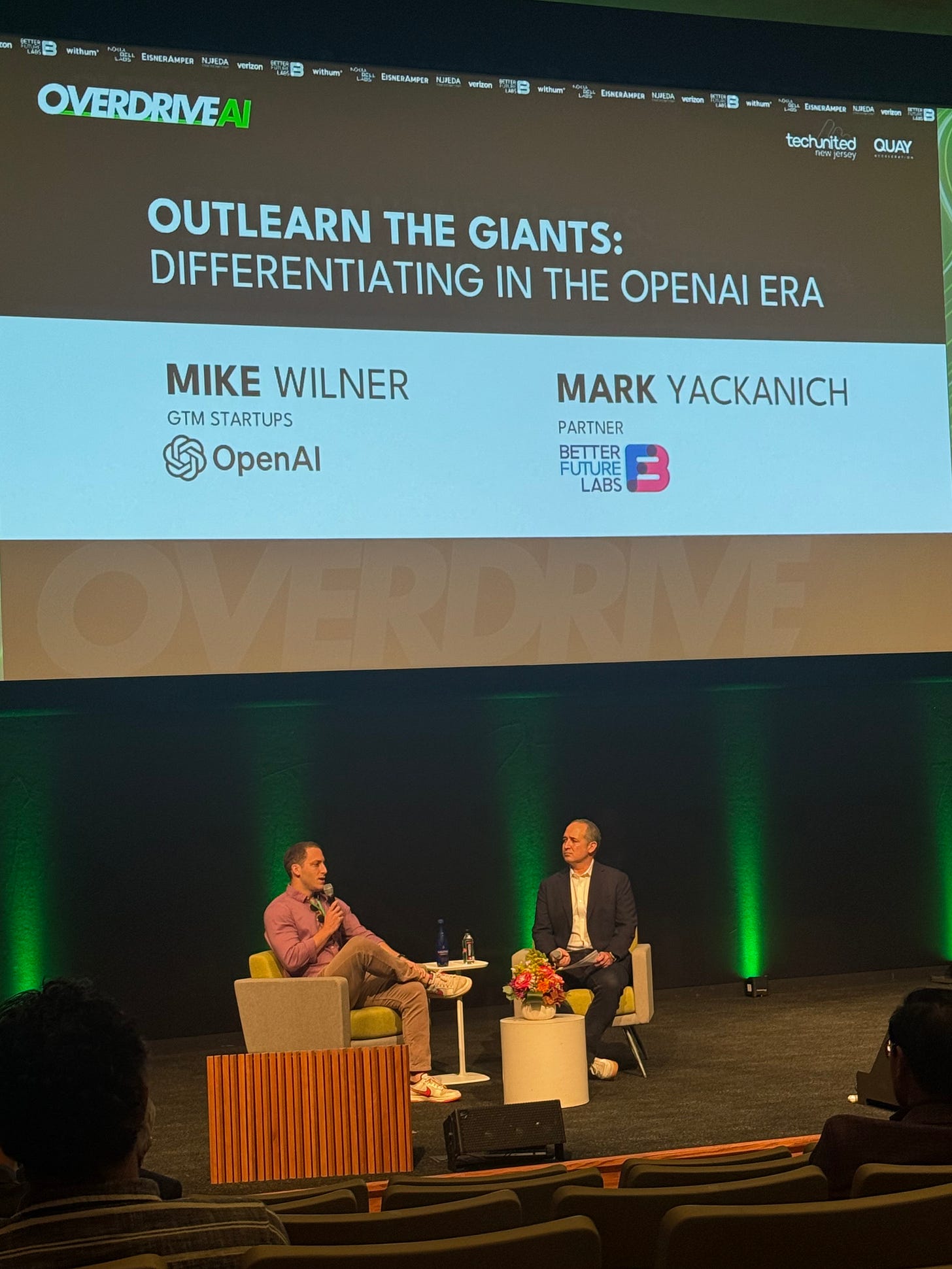7 Ways to Thrive in the Age of AI
What unexpectedly turned my fear and avoidance of AI into a newfound opportunity. And how you can do it, too.

Until a few months ago, my relationship with AI was one of avoidance and shame, accented by images of the Terminator and Wall-E.
It made no sense. I helped launch Hulu. I built my first website in ‘96. I even convinced my friends to buy OLED stocks before it was cool (and profitable).
But life happened. Parenting. Burnout. Too many to-do lists. And slowly… I drifted away from the tech world I once loved.
What brought me back wasn’t hype or headlines.
It was something way more human.
Here are the 7 mindset shifts that helped me face my fear—and find my edge again.
#1: Set the right expectations (for you)
I used to think I had to “know it all” to be worthy of engaging with AI—especially as a former C-Suite leader.
That belief crushed my curiosity.
I put off exploring because I was afraid to fail publicly… or even just suck at something new.
Only when I reset my expectations this past year did I finally create the conditions to feel safe enough to dabble in AI.
It was all part of the context I set for myself in building my business.
I told myself to “simply enjoy the experience and take small steps forward every week.” I didn’t set stretch goals. I wasn’t aiming to help 1 million people. I wasn’t trying to build a 7-figure business.
Aiming high isn’t bad, but don’t do it because someone else says so.
That’s a recipe for burnout.
Set expectations that match your needs.
“The chief problem in self-improvement is that people’s desire to be more worthy puts tremendous pressure on them, so that their first efforts, if unsuccessful, create a feeling of failure, and they give up”.
― B.J. Fogg, Tiny Habits: The Small Changes That Change Everything
I started with using ChatGPT to help me with my branding, outlining my target customer and my offering. Then I tried out various custom GPTs to help me improve my writing.
I viewed most of my interactions with skepticism, but I could see the value of AI even in a few brief interactions.
I was slowly rewiring my brain to find a way to engage without fear because I had finally set the right expectations.
—
My takeaway:
Set expectations that serve your growth, not your ego.
—
#2: Don’t go it alone
When you’re in burnout mode, isolation feels like a safe place.
But it’s not.
In school and at companies earlier in my career, I was always surrounded by people curious and excited about technology. I was never the most knowledgeable and I didn’t have to be.
This year, I started reaching out again. Old friends, former colleagues… people I respected but hadn’t spoken to in years.
That’s how I ended up at the OverdriveAI conference. With my friend Mark from our Hulu days.
Reconnecting reminded me: community isn’t optional—it’s essential. Especially in tech.
You don’t need to be the smartest in the room. You just need to be in the room (again).
This last Thursday, we met in real life at Nokia Bell Labs at the TechUnited OverdriveAI Summit.
It had been more than a decade since I had attended a conference where tech was the theme. I was nervous.
It ended up being the best half-day I had experienced in months. The speakers were engaging, sharing hard data and raw truths.
They didn’t dispel all my fears about AI, but they did help me see new possibilities. And they changed how I believe I need to engage with AI going forward.
I don’t need to do more with AI.
I need to stop working with AI alone.
The power of collaboration, sharing knowledge (and misses), and problem-solving together is essential to any innovation. I knew that, but had forgotten in the haze of the last few years.
—
My takeaway:
Collaboration beats isolation. Every time.
—
#3: Trial and error is the only way
Mano Mannoochahr, Verizon’s Chief Data, Analytics & AI Officer, shared that they have deployed over 1,000 AI models, including:
Reviewing and analyzing customer bills, guiding customer service representatives on next actions on live calls, and even creating a podcast for managers to hear a digest of the top call center issues weekly.
Verizon didn’t build these by staying still. They are constantly testing and learning.
Dan Van Tran shared how Collectors, a billion-dollar business built on valuing and trading sports and Pokemon cards, ran a test that went sideways and set them back a year.
What did they do?
They got back at it and kept going.
Anthropic recently ran a test to see if AI could run a small business of vending machines within the company. AI ended up making up customers, denying the mistake and saying it was an April Fool’s joke.
The test was a failure, and they celebrated the learnings.
AI is like any other major shift: You figure it out by doing, not by waiting for it to be perfect.
—
My takeaway:
Don’t wait for mastery. Get your hands dirty and learn as you go.
—
#4: Think revolution, not optimization
Most of us are asking:
“How can I use AI to be 10% faster?”
That’s the wrong question.
The right one is:
“What would my work look like if I started from zero… and built it with AI from day one?”
Technology teams are shifting from 2-week sprints to 2-day sprints.
AI native startups are going from no product to $$M in revenue in 6 months, not 6 years.
AI is enabling traditionally analog services, like law firms, 4x margins
Revenue efficiency is dramatically different for AI companies compared to traditional tech:
Because the real wins aren’t tweaks—they’re reimaginings.
There are risks, but the opportunity to leverage AI is astonishing, if you’re willing to dream it.
—
My takeaway:
AI isn’t a tool to help you move faster. It’s a partner to help you do things differently.
—
#5: Redirect your expertise

Working with AI is like working with 10,000 interns.
- Barclay Blair, Senior Managing Director of AI Product Innovation at DLA Piper
AI doesn’t “know” anything. It only knows what you feed it. And while that means it will get “smarter” over time, the wrong way conclusion to draw is that your career is over.
The right conclusion is that it’s time to prepare to pivot.
Leaders with depth are positioned very well to win in the age of AI. But only if you are ready to adapt.
Ethics, judgment, expertise, and relationships are the areas that AI cannot tackle on its own. If you possess these, you have the advantage.
Here’s how to put that advantage to use:
Know when to use AI and when not to. Only use AI when you can properly direct and assess its output. When you are still learning and need to build your expertise, don’t rely on AI.
Learn how to mold AI to your needs. Learn how to prompt effectively. Not just the initial request, but the determination and persistence needed to hone AI output into what is actually valuable.
Help AI companies build expertise. Instead of waiting to be replaced, be the one helping to educate AI. (Example: AI companies are recruiting financial analysts to work less and integrate their expertise.)
Zero in on work that only you can do. Your “zone of genius” will have only more meaning in the future. What you do uniquely well, that you enjoy, is in demand, and cannot be replicated by AI, is going to matter more than ever.
To be clear, those who don’t pivot risk being left behind and worse, being left out of the evolution. But the great news is that AI access and knowledge are nearly ubiquitous.
From Youtube to Github, from podcasts to the multitude of models available, there are plenty of ways for you to get your feet wet.
No technology change has yet to shrink the labor pool. However, there will be winners and losers.
—
My takeaway:
AI doesn’t have to replace you. But you do need to reposition yourself.
—
#6: Build bridges, not barriers
AI can only improve with the guidance of humans and the data we feed it. This means that there is an entirely new layer of roles that is entirely focused on connecting the dots between AI and what it is capable of delivering
Mike Wilner who heads GTM Startup relationships for OpenAI shared a list of some of the new engineering jobs that are emerging as an example:
Internal Context Engineers — They refine the prompts and the information that helps AI get to better results.
Machine Learning and AI Engineers — They run the experiments and assess the outcomes to determine what inputs and interpretations need adjustment.
Forward Engineer (pioneered by Palantir) — They provide services deployed on-site at clients. Forward deployment doesn’t just help with client integration; it provides critical information to the development teams that wouldn’t be available without on-the-ground context.
Go to Market Engineers — They power the tech stack necessary to optimize marketing and sales to reach the right customers and increase conversion efficiency.
We have lived in a world where we thought first about roles and then about people. With AI, a completely new model emerges.
Now we can start with “how much can AI do,” and then add in “where do you need humans in the loop?”
The key is to be able to take a systems-level view of the work at hand and see it across functions and roles. The connection points are where the power lies.
Those who understand this and pull together the people and processes will make the greatest impact. Those who build up barriers will be left behind at best and exited at worst.
—
My takeaway:
Stop thinking in silos. Start thinking in systems.
—
#7: Proximity matters
Remote work isn’t going anywhere. But if you want to lead in AI, being around the action matters.
Talent: Functions and skillsets density (e.g. NJ is strong in engineering)
Customers: Verticals and industries concentration (e.g. NJ has pharma, finance, accounting, manufacturing, logistics)
Location shapes access. Relationships deepen in person. Innovation thrives in collisions.
AI isn’t in the cloud. It’s in conversations.
—
My takeaway:
Get in the room. Or build a new one where you are.
—
Closing thoughts (for now)
I avoided AI because I was afraid of losing relevance.
But what I’ve realized is this:
The way to stay relevant isn’t to master AI. It’s to keep evolving—with people, with courage, with intention.
That’s what this year gave me.
That’s what I want to help others do.
If you’re trying to make sense of your next chapter in leadership or career…
I’m here.
If you want to join me on this journey, leave a comment, subscribe to this newsletter, or follow me on LinkedIn.
We will get there together!
✨ Final takeaway:
The future doesn’t belong to those who know it all. It belongs to those willing to stay in the game and keep learning.
If you want more from me, Save the Date!
My next Substack LIVE is on Tuesday, November 4th, with Alex McCann, the thoughtful and viral author of Still Wandering and founder of TrueNorth and MidWeek. We’re talking about how to evolve your career to fit your life.
Join with this link.
May you lead without limits,








AI isn't something that you can pick up and master in an afternoon. It takes time to find the best tool for the job and then do the 'training'. Also to realize what you want to do yourself and what you want AI to do. What saves time? What does AI do better than you? What do you enjoy doing yourself? Such a new area that we are all explorers at the moment!
Great post as always, Kathy, you are on fire!
Collaboration for the win!